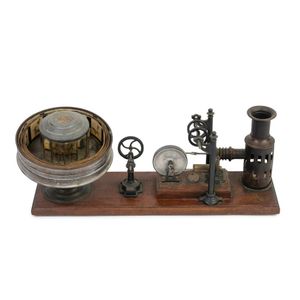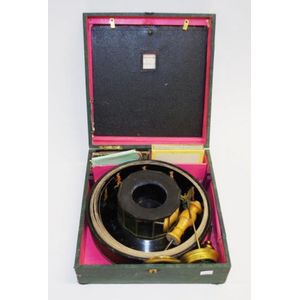
Late 19th Century French Praxinoscope in Vintage Cased Design
A vintage cased praxinoscope, French, late 19th century, the case 12 cm high, 25 cm wide, 25 cm deep

Ernst Plank Praxinoscope: 19th Century Toy with Image Strips
An Ernst Plank praxinoscope, 19th century, with additional image strips, 18 cm high, 41 cm wide, 11 cm deep. Other Notes: Ernst Plank & Company started out in 1866 in Nuremberg Germany as a toy-repair shop. Named after the company founder, they made magic…

French Praxinoscope Theatre, 1905
Edwardian era French Praxinoscope -Theatre with fittings to interior of device, circa 1905. Note: the Praxinoscope was invented in France in 1877, and evolved to become a popular entertainment device, prior to the development of moving pictures.
 Loading more...
Loading more...